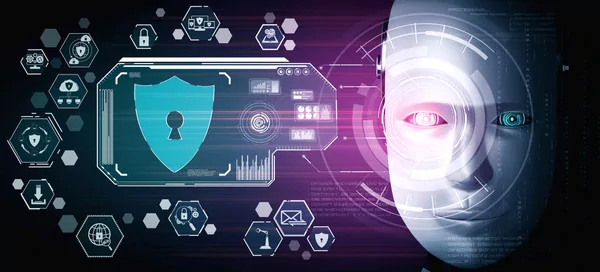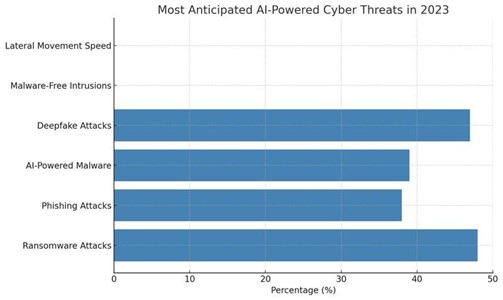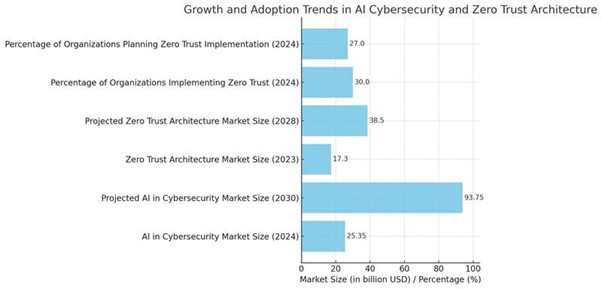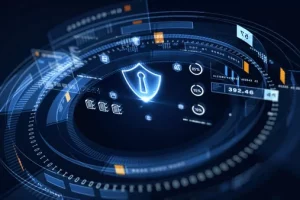
When AI Hacks Back: Cybersecurity in 2025
- Posted by 3.0 University
- Categories Cyber Security
- Date April 24, 2025
- Comments 0 comment
The Rise of AI-Powered Cyber Threats
What’s reshaping the cybersecurity landscape, largely, in myriad unforeseen and unprecedented ways? The answer, obviously, is ‘Artificial Intelligence.’
Cybercriminals, for instance, now use generative AI—not just for phishing emails that seem strikingly real but also to build websites that mimic genuine ones and even create deepfake clips.
These tricks add extra layers of deception, making it tougher for defenders to pick out the real threat.
Recently, this sort of clever manipulation has transformed the whole scene, meaning that more than ever, social engineering attacks come packed with an extra dose of sophistication.
Then there’s the curious rise of malware-free intrusions, where attackers use stolen login details along with perfectly legitimate tools instead of the usual malware. The speed is also breathtaking—some breaches manage to move sideways within a network in under a minute, which, in most cases, leaves little time for reaction.
Very Distinctly, these shifts, in entirety, are an indication that AI will be the next major arena in cyber warfare, a signal that we urgently need to deepen our understanding and bolster our defences against these AI-powered manoeuvres as digital security steps into 2025.

This bar chart demonstrates the most projected AI-powered cyber threats in 2023; the emphasis is on the percentage of cybersecurity professionals airing concern for various types of attacks.
Ransomware attacks are mentioned as the top menace, followed by phishing attacks and AI-powered malware. Deepfake attacks are also of significant worry, while data on malware-free intrusions and lateral movement speed is not available.
Evolving Cybersecurity Technologies
Cyber threats these days are getting pretty clever, which means organizations need to rethink their security strategies—not in a textbook way, but more like a hands-on, ever-adapting approach.
AI-backed defence systems now jump in by using machine learning to spot odd behaviours, forecast when breaches might crop up, and sometimes even launch an automatic countermeasure; this mix really speeds up how quickly threats are dealt with.
You also see the rise of what’s known as Zero Trust Architecture: rather than assuming everything within the network is safe, it keeps checking user identities and device status all the time (it’s like never taking anything for granted).
On top of that, as cloud computing becomes a staple for everyday business, enhanced cloud security measures—with robust encryption, finely tuned access controls, and almost relentless monitoring—have surfaced to guard sensitive data in virtual spaces.
Generally speaking, these changes point to a shift from a reactive stance to a more predictive one, nudging organizations to continually rework their digital defences to keep pace with fast-evolving, AI-enhanced intrusions in a threat landscape that’s growing ever more complex.

This bar chart illustrates the growth trajectories of AI in cybersecurity and Zero Trust Architecture markets, alongside the adoption rates of Zero Trust strategies among organizations.
The data underscores the increasing investment in AI-driven cybersecurity solutions and the widespread adoption of Zero Trust principles to enhance organizational resilience against evolving cyber threats.
Educational Imperatives in Cybersecurity
Cyber threats are shifting so fast these days that the call for experts who truly grasp modern cybersecurity challenges feels more pressing than ever.
Institutions seem to be scrambling to update their courses—blending time-honoured defence techniques with fresh, AI-focused topics—so that students don’t just learn old-school methods but also get a taste of the innovative tactics adversaries now employ.
Professional certifications are increasingly seen as must-have credentials in our rapidly changing digital world, serving as hands-on proof of one’s ability to identify and counter complex attacks.
Generally speaking, the ever-changing nature of these threats pushes security pros into a never-ending cycle of learning, where keeping skills sharp is simply part of the job.
Without these timely updates in education, there’s a real risk that teams might be ill-prepared to handle things such as AI-enhanced social engineering, rapid lateral movements, and other cutting-edge techniques.
Thus, investing in adaptable, all-round learning programs is pretty crucial if we’re to bolster our cyber defence in an age where AI plays both guardian and adversary.
Cybersecurity Job Market Trends
Digital networks are now at the heart of almost every aspect of modern life, and as they grow in complexity, a noticeable gap in cybersecurity talent has emerged.
It’s a bit startling—around 3.5 million roles in this field remain vacant across the world, which generally points to a shortage of folks equipped to handle increasingly intricate cyber threats.
This situation, in turn, has upped the pay for jobs like cybersecurity analysts and engineers, recognizing the high risks and the giant responsibility they bear when it comes to defending our digital assets.
One can’t really see the cybersecurity job market as a single, uniform field; it actually spans many corners—from analysing emerging risks and responding to incidents swiftly to keeping up with compliance needs and managing overall risk—which appeals to a broad range of skills and interests.
In general, the constant shift in risk or endangering dynamics—especially with AI-powered attacks now in the mix—is driving organizations to amass investments more in education and specialized certifications, all with an eye on prepping their workforce for a digital future that is anything but straightforward.
Job Title | Median Annual Salary (2022) | Projected Growth (2022–2032) | Annual Openings (2022–2032) |
Information Security Analyst | $112,000 | 31.5% | 16,800 |
Software Developer | $127,260 | 25.7% | 136,300 |
Computer and Information Research Scientist | $136,620 | 22.7% | 3,400 |
Software Quality Assurance Analyst and Tester | $99,620 | 20.3% | 17,500 |
Web Developer | $78,580 | 17.0% | 8,300 |
Web and Digital Interface Designer | $83,240 | 15.2% | 10,700 |
Database Architect | $134,870 | 10.0% | 4,500 |
Cybersecurity Job Market Trends in 2025
Conclusion
Cybersecurity is changing fast as AI gets more involved, and we’re now facing challenges as well as new chances we hadn’t seen before.
Bad actors are swiftly utilizing artificial intelligence in their clever and rapid attacks, and our outdated defence methods are no longer effective.
This shift underscores the necessity for organizations to shift towards smarter, AI-assisted protection.
It’s not just about installing modern tools like AI-based threat spotting or Zero Trust setups; there’s also a real need for ongoing training and professional development to keep the cybersecurity teams sharp.
Examining the complex regulations associated with AI deployment, it becomes evident that a robust governance framework is essential to maintain compliance with ethical and legal standards.
Of course, the growing demand for skilled professionals only underlines how important comprehensive training and certification programs have become—they really help equip people with the know-how to handle threats amped up by AI.
Ultimately, staying tough in this ever-changing arena means blending advanced technology, well-thought-out policies, and genuine human expertise.
In most cases, this balanced mix is what will keep cybersecurity adaptive and dynamic—not just now but also heading into 2025 and beyond.
You may also like

Firewalls & Future of Cybersecurity Careers in 2025


